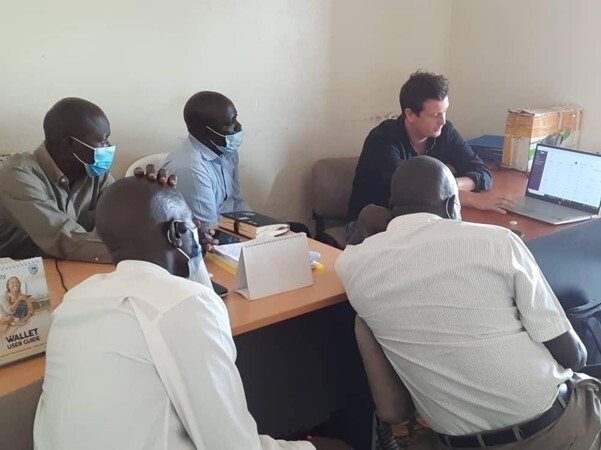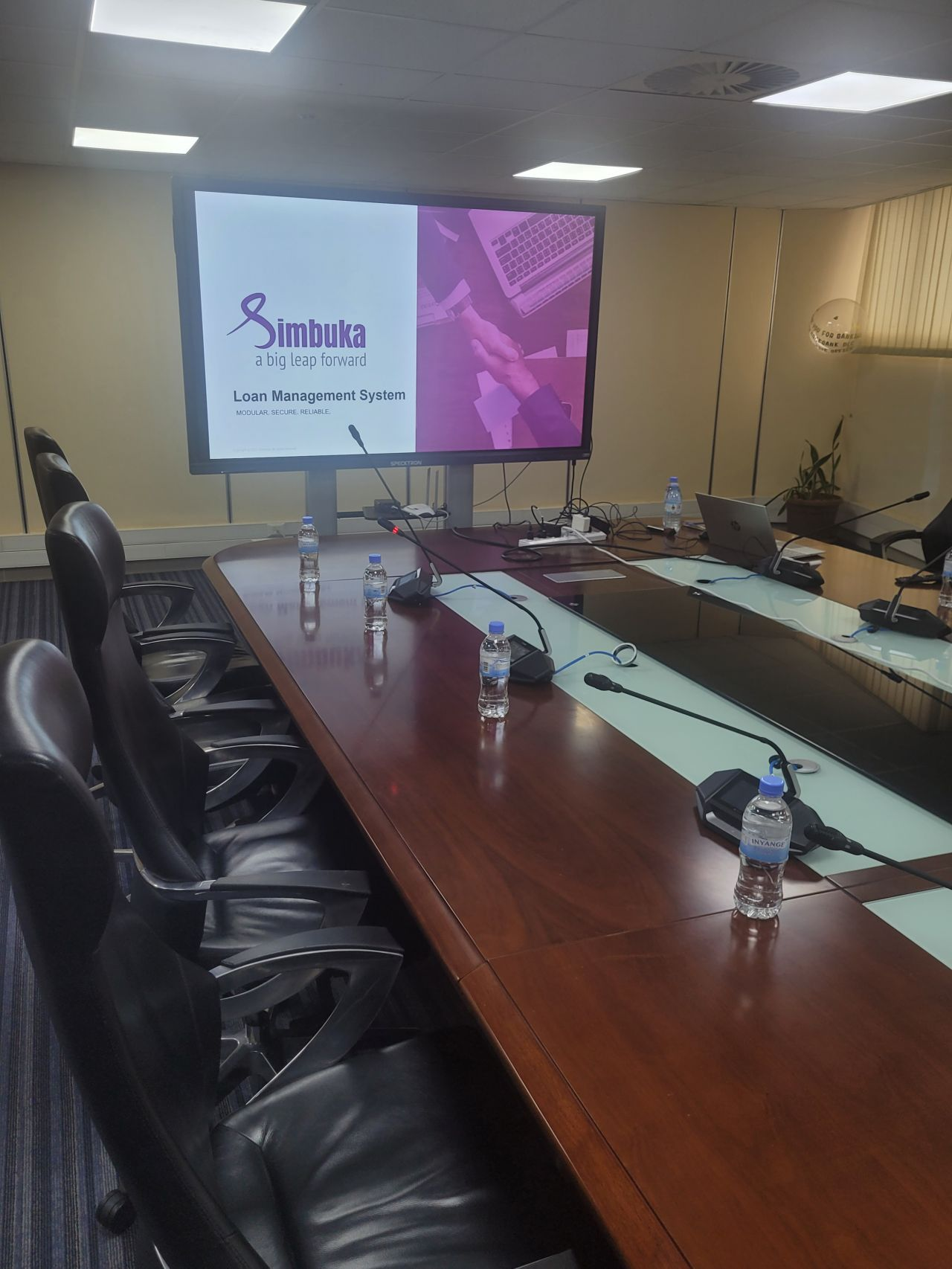Simbuka’s Head of Growth Reflections: The burning topics in the boardroom of East African banks

Banks all over the world are facing numerous challenges. Every bank wants to have the ‘super-app’, every bank wants to become better stewards of the planet, every bank wants to run smooth digital transformations, and every bank wants to be in full control of the various critical risks they face every day. There is a lot on the plate.
Drawing from my discussions with bank executives, I aim to provide a clear perspective on the challenges, growth strategies, and priorities faced by banks. Obviously – as a FinTech professional – the starting point of my conversations is how to simplify, streamline, and automate processes through technology.
This blog breaks down three key subjects set to influence the industry in the coming years. As the Head of Growth at Simbuka, I've had insightful discussions with bank representatives across Rwanda, Uganda, Burundi, Tanzania, Kenya, Malawi, Ethiopia, and The Democratic Republic of the Congo (DRC). From cracking the code on credit scoring to the in-house vs. Software as a Service (SAAS) dilemma and the game-changing concept of straight-through-processing, I'll share insights based on real conversations and experiences. Ready for a deep dive into the future of East African banks? Let's go!

Topic 1: Getting the credit scoring model right
What?It is the first and foremost question I get: how do we get our credit scoring model right? I have seen many banks struggling and asking for help on how to approach this rather complex and detailed topic. Accurate and predictive credit scoring models lead to maximizing a bank's risk-adjusted return. However, markets and consumer behaviour can change rapidly during economic cycles, such as inflations or recessions. Therefore, risk managers must be able to create, adjust, and validate models agilely.
So what?Well, credit scores help banks assess risk, but there is more to it. A high credit score means a quicker review process, reducing decision and turnaround time (TAT). Plus, banks can use a risk-based pricing approach, tying loan prices to borrowers' risk profiles and credit history. This not only optimises lending revenues but also rewards financially responsible customers. Some banks are even thinking about sharing the 'bank credit score' with customers, promoting transparency and providing insights on how to enhance their scores. In short, it is a win-win – faster processes and better credit quality. Credit scores are like super helpful assistants for lenders, making things faster and safer:
- Faster loans. Studies show credit scores can cut loan processing times by up to 70%, according to FICO and the Mortgage Bankers Association. Experian even says it saves 5 days on average for mortgages!
- Safer loans. The Credit Research Foundation found loans approved with credit scores had a default rate 3 times lower than those without (2.3% vs 7.2%). This means less risk for lenders and a healthier credit market.
- Especially helpful in developing economies: According to the World Bank, credit scoring is a game-changer in emerging markets, reducing credit risk and improving overall portfolio quality.
In short, credit scores make loans faster and safer, benefiting both borrowers and lenders.
What’s next?Start by ‘fixing the basics’. It doesn’t matter what type of credit scoring model you have if you don’t have the right data. You need relevant and practically useful data uniformly. Once you have current and accurate data, identify and capture the relevant parameters for scoring a specific loan product in a flexible and scalable solution. Remember, scorecards are a continuous process, so ensure the solution supports backtesting and allows for ongoing enhancements.
It is always possible to embark on the journey of building a scorecard. Simbuka can assist in setting it up; refer to our previous blog for further information: Simbuka Blog - Unlocking the Power of Scorecards. This resource provides valuable insights into the new era of credit scoring and how scorecards can be a game-changer.
Topic 2: In-house or SAAS (Software-as-a-service): at a crossroad
What?The ongoing conversation within financial institutions revolves around the decision-making process between in-house development and Software as a Service (SAAS) solutions. As banks navigate challenges like cost management and adapting to technological changes, the debate intensifies on which technology aspects should be internally developed and which can be effectively outsourced. This dilemma, common in the banking industry, involves carefully considering whether to retain certain technologies, in-house or opt for outsourcing through professional expertise, off-the-shelf platforms, or as-a-service models. Striking the right balance is crucial. Areas with established standardisation, such as payments, cards, loan management, and security*, present significant opportunities for SAAS. Each option brings compelling arguments, and the decision-making process is often nuanced, reflecting diverse perspectives in the financial sector.
So what?Picture this: the CEO's desk is buried under challenges – from perfecting mobile and internet banking to providing top-notch customer service 24/7, creating tools that everyone finds a breeze to use, and bidding farewell to cumbersome paper processes. It's a massive to-do list, and it's all part of a grand journey I call becoming Truly Streamlined and Digital (TSD).
TSD is not just a buzzword. It is the key to staying ahead in the competitive world of banking. It's not just about technology; it's about redefining how banks connect with customers and predicting what they need before they even ask.
Now, the burning question for CEOs: how do you get there? This is where the decision between in-house and SAAS comes into play. Building everything in-house gives you control, but it is in most cases resource-intensive and time-consuming. On the flip side, SAAS is like having a tech ally; it is in most cases faster, cost-effective, and lets you focus on what truly matters – making your bank TSD. The choice is yours: build, buy, or partner for a streamlined and digital future. What's it going to be?
What’s next?What's the next big move for banks? Well, it's not as simple as picking A, B, or C. From my experience, here are two crucial things for bank executives to keep in mind as they pave the way for the future.
Firstly, technology is an enabler – not the objective. Technology is one of the enablers to reach the bank’s short and long-term goals. This may not be ground-breaking, but always align the current technology landscape to the 5+ years plan of the bank. This is also important in calculating the business case – look beyond your short time challenges. These can be divided into technological advantages, such as better resilience, lower maintenance and operations costs, elastic infrastructure to accommodate changing demand, and business benefits like commercial advantages, speedier innovation, lower experimentation costs, and the capacity to scale up advanced analytics.
Secondly, executives need to stay informed. I have had many conversations with executives who still have some persistent misunderstandings. Some executives are not aware of the various business models available, have unfounded quality concerns, or do not fully oversee the short and long-term business case of SAAS. Being proactive in understanding these aspects is crucial for steering the bank towards the future.
Topic 3: Straight-through processing of loans: bend it like Erling Haaland
What?
Straight-through processing is not a new term to many. Some even refer to it as “exception-based processing” – human intervention is only called on if the bank flags something unusual during the process. The emergence of instant loans in the banking sector is another interesting development. Instant loans are loans that are essentially granted or rejected almost instantaneously, as you might infer from the name. Think of agent loans, salary-based loans, or personal overdrafts. Due to a lack of insight and predictability of the different risk factors, banks routinely took a long time to approve loans for customers. If the bank can use technology to make sense of the accessible consumer information, opportunities for upselling and top-ups are basically up for grabs. Sometimes banks do not realise that they are sitting on a pot of gold. For banks, the instant lending market is a huge one – but largely untapped.
So what?Technology – that’s the first thing that comes to mind of many executives. However, solely leveraging technology is not the magical bullet to automate manual servicing functions. It requires way more than that. Just to name a few: implementing a uniform set of procedures, simplifying document uploading, setting a standard model of roles and responsibilities, utilizing automated credit assessment tools, and maintaining consistency across different digital channels.
Here are some facts from East Africa's digital-first banks, showing the impact of automation and standardisation:
- 70% Less Operational Costs. Standardized procedures and digital document upload have cut servicing costs by 70% per transaction in East Africa.
- Reduced Errors and Rework. McKinsey reports that 40% of rework in financial services comes from inconsistent processes. Standardizing procedures in East African banks can cut this error rate in half, saving time and resources.
- 50% Lower Transaction Processing Costs. McKinsey & Company's 2022 report on African banking reveals a 50% reduction in transaction processing costs through automation.
- 20% More Access for the Unbanked. Automation, through simplified document upload and digital KYC procedures, has allowed East African banks to serve 20% more people who were previously unbanked.
Banks realize that they must look beyond Microsoft Excel spreadsheets and invest in unified and automated systems. The majority of banks are now “talking digital”, but not all are “acting digital”. I happen to work for a loan management provider @Simbuka and I still see that the processing of personal and business loans is still carried out the same way it was done decades ago. Manual intensive and following static monitoring, screening, and evaluation of rules.
If you want to score goals like Erling Haaland, you need to fine-tune your performance. Get a reliable pair of boots, ensure your outfit is on point, work on a precise shot to clinically finish opportunities, and stay away from defenders. Don't waste time on unnecessary tricks; focus on the shortest way to the goal, just like the concept of straight-through processing. Develop your skills to shoot when the opportunity arises and avoid unnecessary maneuvers. Precision and speed - you get the idea!

The author, Paul Weiss, is a FinTech enthusiast with a wealth of experience in managing digital transformation programs for banks in Europe and Africa. As Head of Growth at Simbuka, Paul challenges, supports, and advises financial institutions on how to leverage technology and how it can be applied to improve their process, making it simpler, more efficient, accessible, and more secure for customers. Would you like to know more? Send me a personal message or drop me an e-mail (paul.weiss@simbuka.com).
The postings on this site are my own and do not necessarily reflect the views of Simbuka. The information contained in this blog is provided on an "as is" basis with no guarantees of completeness, accuracy, usefulness, or timeliness. It is key to acknowledge that (East) Africa is not one market and is home to a population whose circumstances vary widely – rural and urban; high and low income; unbanked and underbanked.
Sources:
Try and experience the impact yourself
The Next-Generation Loan Management Platform streamlining loan processes like never before. Dive in and see the difference firsthand!